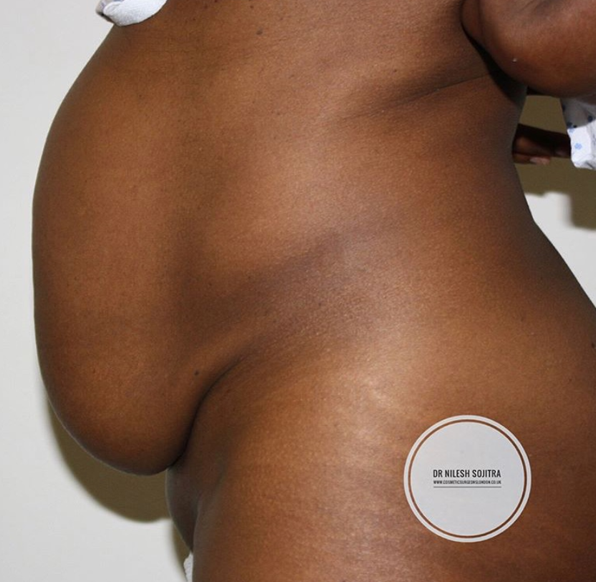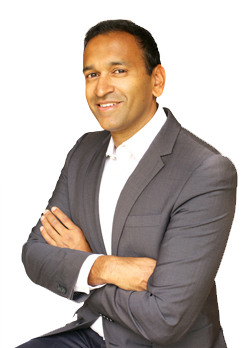Book Appointment Online or Call for a consultation:
0845 456 8505
07851 407 774
Book Appointment Online or Call for a consultation:
0845 456 8505
07851 407 774
"Tummy Tuck" or abdominoplasty, can noticeably improve the appearance of a large or protruding abdomen as well as considerably narrowing the waistline. This is achieved by removing excess skin and fat from the middle and lower abdomen as well as by tightening the loose underlying abdominal muscles. Cosmetic Surgeons London believe that this procedure is ideal for those of you who have been through childbirth. Pregnancy often results in your tummy having been stretched (leading to stretch marks) and the abdominal muscles weakened (divarication). Some patients may only require a "mini-abdominoplasty" with or without liposuction. There are many ladies who despite dieting and exercise still have fat and loose skin over the abdomen. Cosmetic Surgeons London can help you.



Nilesh Sojitra is a Consultant Plastic surgeon at the Royal Free Hospital in London. He graduated from Edinburgh University in 1994 with a Bachelor's degree in anatomy and completed his degree in Medicine and Surgery in 1997. He is a fellow of the Royal College of Surgeons of Edinburgh and has obtained rigorous training in Plastic, Reconstructive and Cosmetic surgery both in the United Kingdom and internationally.
Nilesh is on the GMC Specialist Register for Plastic Surgery and is a full member of the British Association of Aesthetic Plastic Surgeons (BAAPS) and BAPRAS. He is an experienced Plastic Surgeon and runs an established private practice in which he undertakes all aspects of cosmetic surgery of the breast, face, nose, abdomen, and body contouring following massive weight loss.
The best results occur when Nilesh fully understands what the patient requires, and the patient fully understands what Nilesh can achieve. The most satisfying thing for Nilesh is seeing a patient in clinic who is delighted with the outcome that they were hoping for.
There are many approaches to a tummy tuck and all involve an incision in the lower abdomen in the area below the "bikini line." For a complete tummy tuck, skin is separated from the abdominal wall up to the ribs and the underlying muscles and supportive tissues are tightened. This will narrow your waistline as well as strengthening and flattening your abdominal wall. Excess skin is removed, resulting in a flatter, trimmer and tighter stomach. Your surgeon will discuss the different incision options in advance of surgery so you will know what to expect.
You will have seen Mr Sojitra on more than one occasion to fully answer all your questions. It is important to avoid medications, if possible, such as aspirin and non-steroidal anti-inflammatories (NSAIDs) e.g Ibuprofen (Nurofen), Sodium Diclofenac (Voltarol) for 1 week before surgery. These tablets may increase bleeding during and after surgery. It is advisable to stop smoking and no nicotine products 4 weeks before and after surgery from both a wound healing and an anaesthetic perspective.
You will be admitted to hospital on the morning of surgery and Mr Sojitra along with his consultant anaesthetist will come and discuss the surgical plan again with you and make some marks on your skin with pen. The operation will take approximately 1-2 hours and you will wake up with dressings in place before being taken to the ward. In general, tummy tuck is performed as an in-patient procedure. You will need to have a friend or family member to drive you to and from the hospital and to look after you for the first few days following surgery. Drains are used and you will need to stay in hospital overnight.
You will experience varying degrees of bruising, swelling, and some tenderness all of which improve by the day. Our consultant anaesthetist will prescribe you adequate medication to take home to alleviate any discomfort you may experience. You will be up and moving the day after surgery. It is important not to get the dressings wet after surgery and you will be advised on showering. Depending on your type of work, you may return to work between 14-21 days after your procedure. No heavy lifting or strenuous exercise for 6 weeks. It will take approximately 3 months before the swelling completely subsides and the final result seen. The scar will continue to improve for up to 18 months and you are encouraged to firmly massage the scar after 4 weeks. Your surgeon will see you 1 week after surgery at which point the dressings will be reduced and again at 2 weeks. At 2 weeks the stitches, which are dissolvable, will be trimmed flush with the skin so they cannot be seen. All dressings will be discarded at this stage. Your surgeon will closely follow your recovery to ensure you are able to resume normal exercising and activities. It is suggested you wear an abdominal support garment for 6 weeks.
Scarring on the whole is not problematic. A scar will always exist and will be hidden in the "bikini-line". Certain individuals e.g. afro-carribean races and red haired individuals are at a higher risk of forming excess scar tissue (keloid or hypertrophic scars). Should these scars develop excellent advice and treatment will be provided by your surgeon.
This is an uncommon event and occurs in perhaps less than 1% cases. Antibiotics are given during induction of the general anaesthetic.
Rarely, small blood vessels that have been cauterised during surgery open up afterward. This results in a collection of blood (haematoma) that needs to be removed. This involves a return to the operating theatre where the blood collection is washed out. There are no permanent side effects due to this occurrence should it occur.
This can occur in the lower central part of the scar and is more common in smokers as smoking impairs wound healing. When this happens, dressings are often applied by the nurse and the wound often heals without any surgical intervention.
Any general anaesthetic procedure is associated with a small risk of DVT which can potentially move to the lungs (Pulmonary Embolus). Here at Cosmetic Surgeons London we attempt to minimise this risk by the use of compression stockings before and after surgery, use of pneumatic compression devices during surgery and motivating the patient to mobilise as soon as possible after surgery.